If you have ever sowed seeds, you came across some problems. You might have noticed that not all seeds germinated. You also might have noticed that some seeds germinated earlier and some took a very long time. And I don’t even need to tell you that some seeds made it all the way to harvest, while others grew into weak seedlings and died. Let us take a look at some of the most common seed-starting problems, and how to identify and solve them.
Some common seed staring problems include seeds not germinating, or taking too long to do so, having the soil too wet, too cold, or too hot soil, seeds sprouting and then dying, mold growth, seed leaves turning yellow, or being stuck in the seed coat.
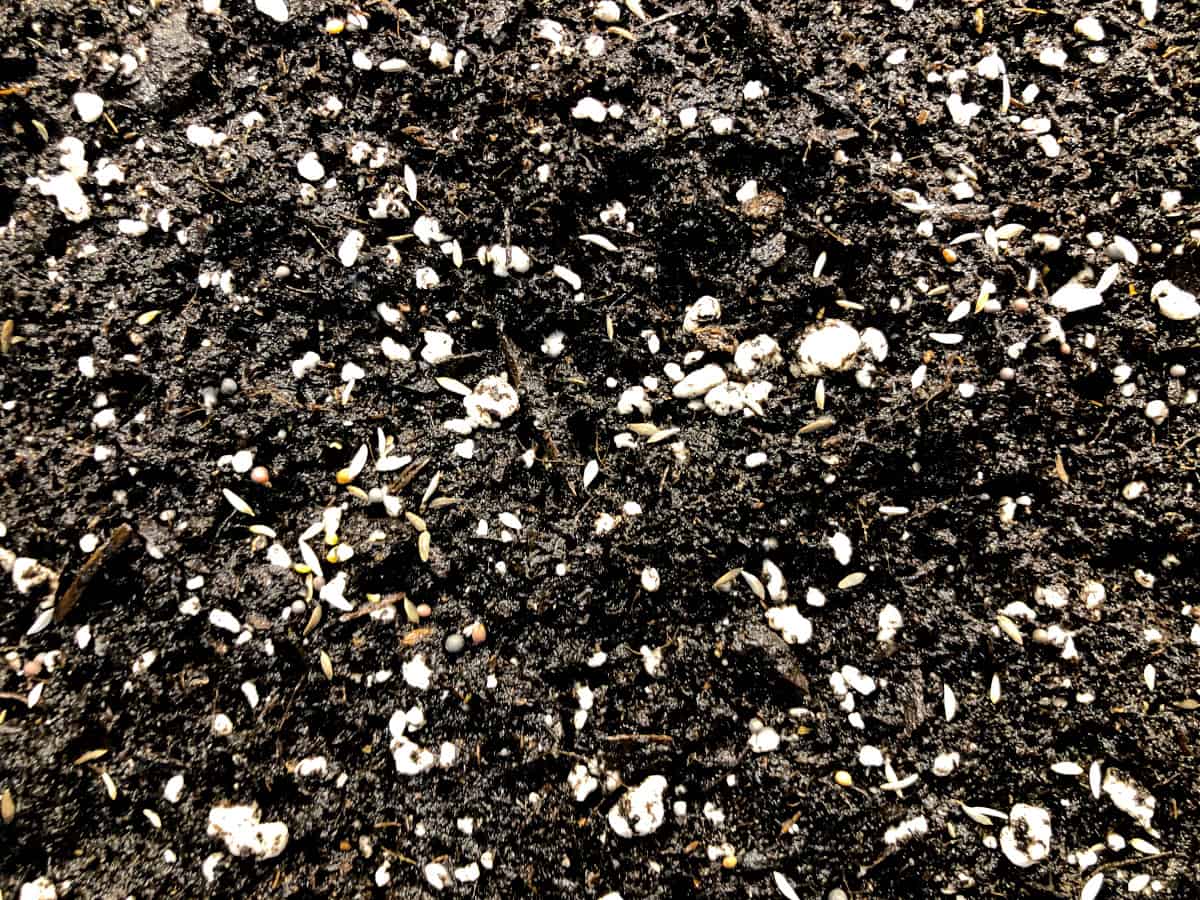
Why are seeds not germinating and sprouting?
The seeds might not germinate or sprout for several reasons. One reason can be that the seeds need more time or warmth to germinate, so be patient and give them a couple more days. The seeds might be had been sowed too deep and need more time and effort to germinate. The seeds might have been nonviable, meaning they had no life in them. The soil might have been too wet and the seeds drowned and rotted. Or the soil dried out completely and the seeds did not have the moisture needed to germinate. The seeds might have sprouted under the surface but as the soil dried out completely the sprouted seed still under the surface dried out and died.
A REALLY GOOD READ: The best way to start seeds outside
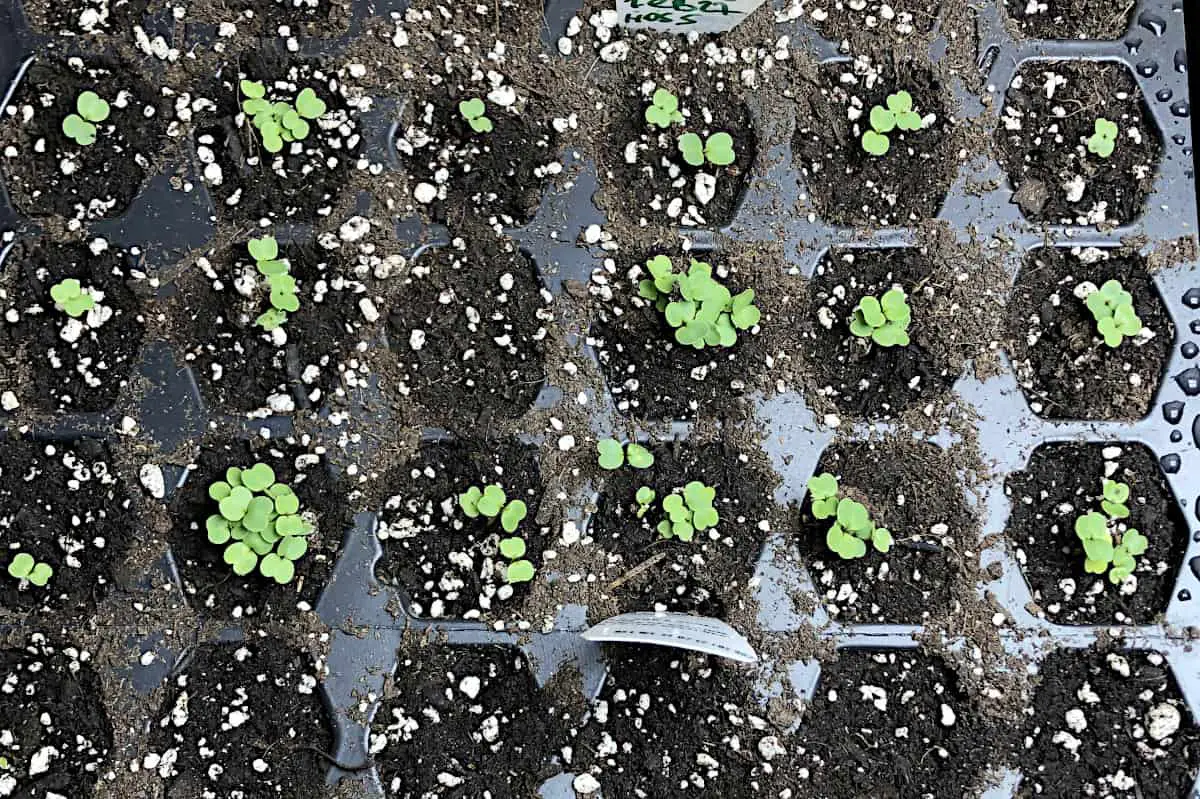
How to find out if the seeds are viable
To avoid seeds not germinating, ensure you plant viable seeds first. Viable seeds mean they are not dead. One way to find out if the seeds are viable is to fill the cup with water and pour the seeds into it. The seeds that are floating are dead and most probably will not germinate. The seeds that sink are viable and should germinate well. Another way to find out if the seeds are viable is to wrap them in a moist paper towel and place them in a zip lock bag, plastic bag, or plastic box. Let them sit on a moist paper towel in a warm place and they should germinate in a couple of days, see germination times on the seed packaging. If the seeds germinate it means they are viable and can be sowed.
A REALLY GOOD READ: How to start seeds without grow lights
Can seeds take too long to germinate?
If you have planted your seeds just a couple of days ago, be patient. Some seeds germinate as early as a couple of days, but some seeds need more time to germinate. I found that leafy greens germinate really quickly, but some seeds especially larger ones need more time to soak up the moisture and sprout. The seeds with tougher coating also need more time to germinate. So be patient and give your seeds more time.
A REALLY GOOD READ: How to start seeds with minimum space
What do seeds need to germinate?
Ensure the seeds have moisture, warmth, and oxygen. Seeds need moisture, warmth, and oxygen to germinate. Ensure the seeds are sitting in moist and warm soil. If the space you grow your seeds at is cooler than 60F they might need more time or might need a warmer place to germinate. Most seeds germinate in temperatures between 68-86F. Some germinate in cooler temperatures than that. And some seeds like peppers, need at least 75F to germinate. Keep the seeds warm, moist, and not too enclosed so they have enough oxygen.
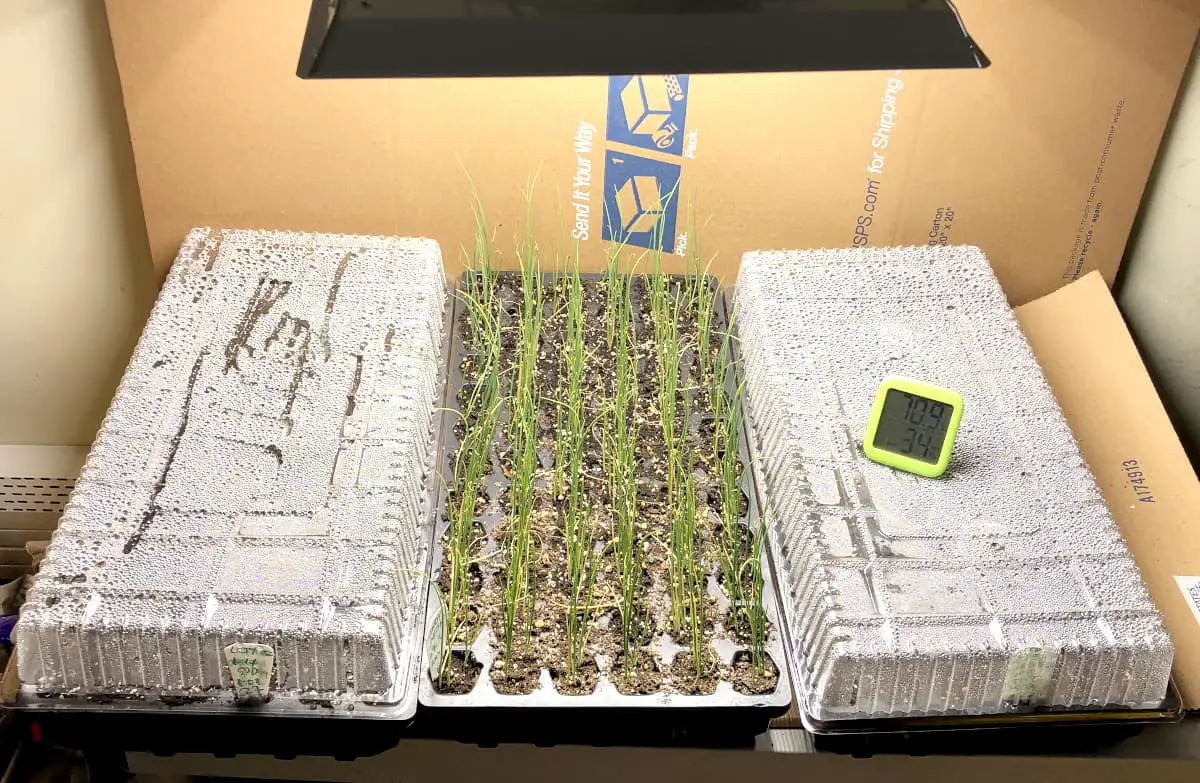
How deep should seeds be sowed?
Sowing the seeds not too deep is also important. Especially tiny seeds, they do not need to be sowed very deeply. In general, sow the seeds in a depth about three times the size of the seed. The carrot seeds and parsley are very tiny they need to be sowed pretty shallowly. If a tiny seed is sowed too deep it might need more time and effort to germinate. If the seed is too deep, it might start to germinate and never reach the surface because all the energy was put into reaching it. It might die on the way to the surface. Keep the sowing depth recommended or use a general rule to sow the seeds about three times dept compared to the size of the seed.
A REALLY GOOD READ: How to start seeds and care for seedlings
How moist should the soil be for the seeds to germinate?
Seeds need damp soil to germinate. The soil should be moist but not wet. If you can squeeze the soil the seeds are in and it drips water, the soil is too wet. Sow the seeds into dry soil, and cover them. Then moisten the soil thoroughly with mist using a spray bottle. Check the bottom of your seed starting container, if you see the soil is moist on the bottom, stop watering. Cover the seeds with a clear plastic lid, or clear plastic material and keep it on until the seeds sprout. The clear plastic will ensure the moisture is kept in the soil and does not evaporate. Thus, you need to water sowed seeds only once until they sprout if you keep them covered. Keep checking the surface of the soil noon the less. The soil must stay moist the whole time the seeds germinate. If the surface of the soil goes dry for whatever reason, mist it with a spray bottle.
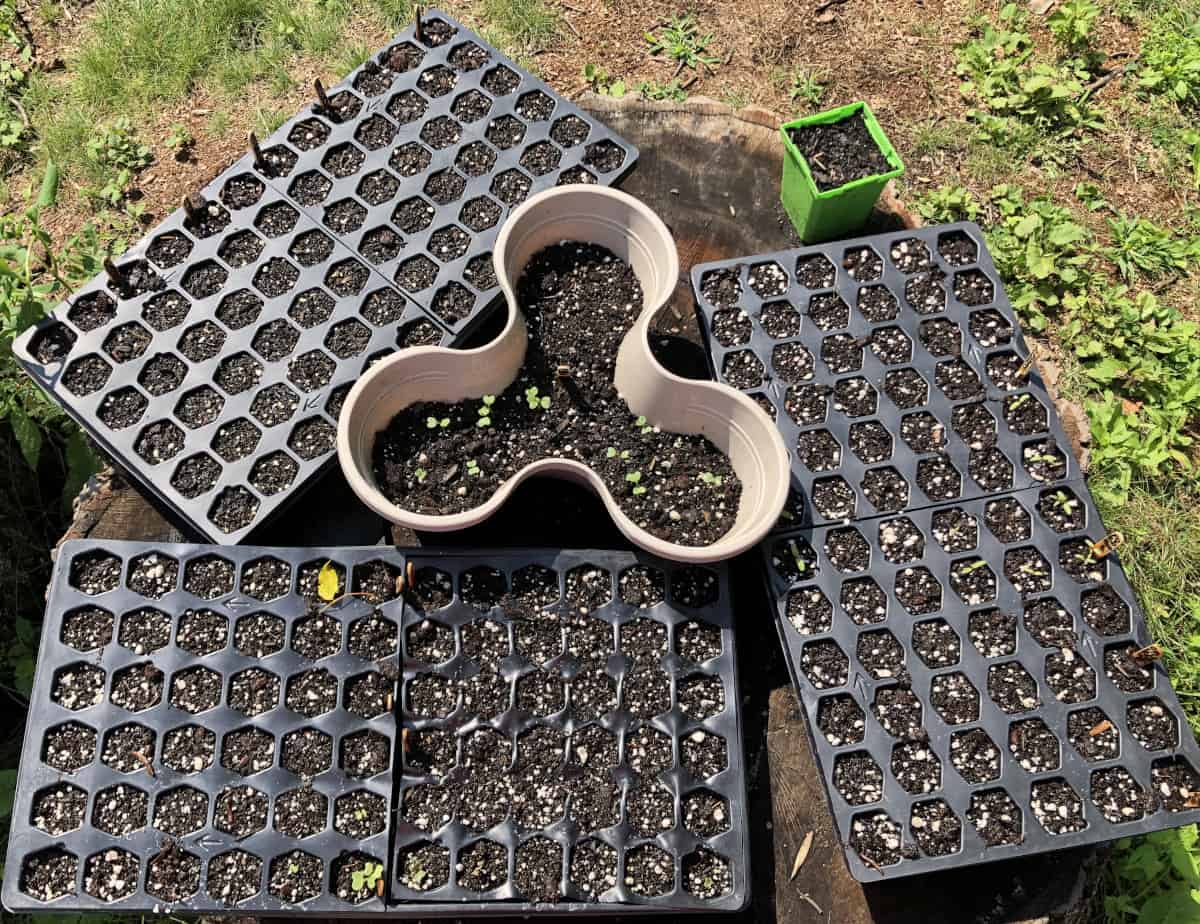
If the soil dries out while the seeds germinate it can stress the seed and delay the germination process. What can happen during the time the soil is dry, is that the seeds might have already started to germinate and as the moisture is out of the soil, the seed germinating seed might wither and die. If your soil was left to dry out completely, it might be that your seeds are dead. Water the soil thoroughly and give it a couple more days. Or dig one seed out, if the seed is still intact, it can still germinate. If the seed is opened and dry it is dead and you need to start the seed-starting process all over.
A REALLY GOOD READ: Easy vegetables to start from seed indoors
Can the soil be too wet for seeds?
Yes, indeed, the soil can be too wet for the seeds to germinate properly. Seeds need only damp soil, but too drenching or soggy soil. If you squeeze the soil and it drips drops of water it is too wet for the seeds. Too wet soil can ruin the seeds by drowning them. The seeds can rot, or turn into mush. Too wet soil might also grow much mold on top.
We have wet springs in my climate. I have lost many directly sowed carrot seeds to too much rain. They simply rotted and did not germinate. Ensure the soil is damp, but not too wet when sowing seeds.
How to store seeds
The seeds lose viability when they are not stored properly. It is recommended to store the seeds in sealed containers, in a dry, dark place and cool place. The seeds should be stored when dried thoroughly. If you save the seeds from your own garden, ensure the seeds are completely dry before you store them. If the seeds are not stored completely dry, they will rot and mold will grow on and around them. The recommended temperature for the ideal seed storage is between 32-41F.
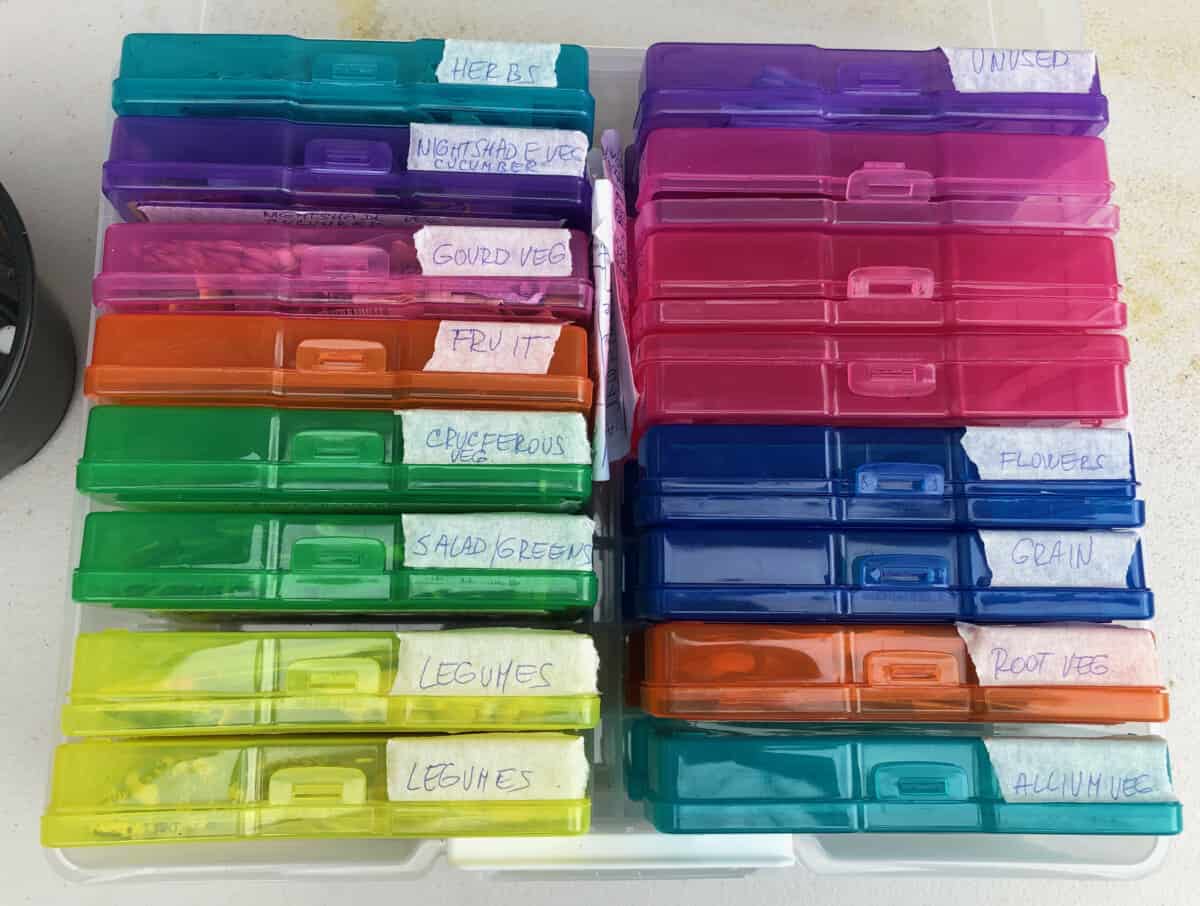
I store my seeds in a basement because it is the coolest, darkest, and driest part of our home. I keep my seeds in paper packets or in small plastic zip-lock bags. Then they are placed in individual plastic photo cases all contained in one plastic box with a very handy handle! It is very transport friendly, easy to take the seeds out and place them in. It is a great way to keep them sorted. It is very functional, user friendly, and it looks nice. It is very handy way and organized. It provides plenty of protection to my seeds, but it is not water or airproof, which does not bother me. I do not require to have it to be water or airproof. Because the little cases and the box they are in are plastic, they do not rot, do not mold, do not they do not change their structure, or keeping abilities. They can be wiped with a paper towel if they get wet or moist, and they can be easily cleaned. Which is a big plus for us gardeners!
I bought my seed storing box under the name ‘photo and craft keeper’. It can be bought online or at your local art and craft stores. If you are looking for a great gift for a gardener, this would be it!
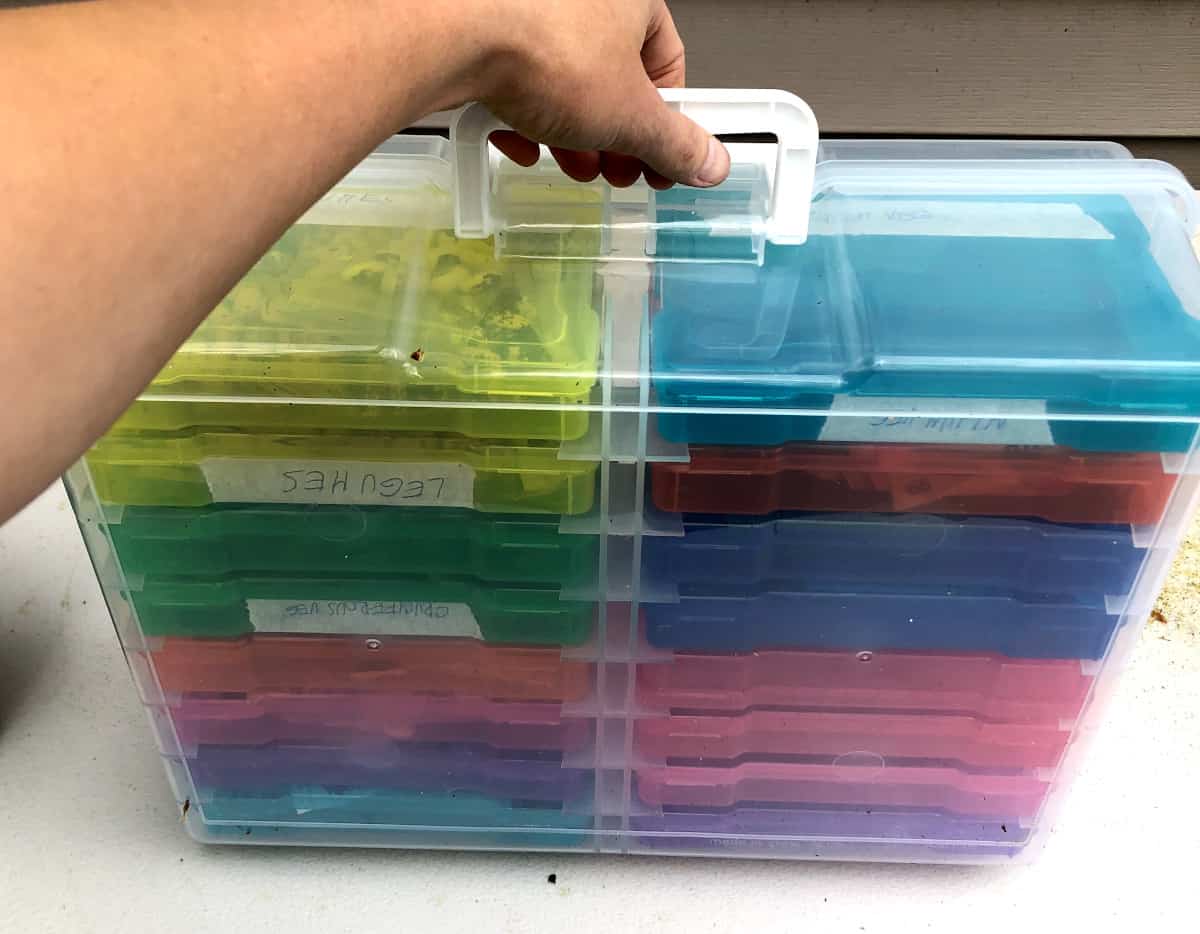
What is multi-sowing, or clump growing
The best way to start seeds outside
How to start seeds without grow lights
How to start seeds with minimum space

